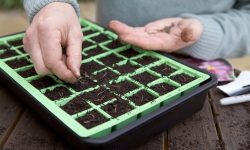Sweet pea flowers, with their delicate petals and heavenly scent, have long been a favorite among garden lovers. Whether trailing along fences or climbing up trellises, sweet peas add romance and charm to any outdoor space. Fortunately, growing sweet peas is not only rewarding but also surprisingly simple—even for novice gardeners. In this guide, we’ll explore everything you need to know to grow sweet pea flowers easily and successfully, so you can enjoy a vibrant, fragrant garden.
Understanding Sweet Pea Flowers

Sweet peas, or Lathyrus odoratus, are annual flowering plants native to Sicily, Cyprus, and parts of the Mediterranean. Known for their intoxicating fragrance and wide range of colors—from deep purples to soft pinks and pure whites—sweet peas are popular in cottage gardens and flower arrangements alike.
There are many varieties of sweet peas, including traditional heirloom types known for their scent and modern cultivars bred for larger blooms or improved heat tolerance. While most sweet peas are climbers, some dwarf varieties are well-suited for containers or borders.
When to Plant Sweet Pea Seeds
Timing is key to growing strong, healthy sweet peas. In cooler climates, gardeners typically sow seeds in late winter or early spring. However, in milder regions, sweet peas can be planted in the fall, allowing the roots to establish over winter and produce earlier spring blooms.
Sweet peas prefer cool temperatures to thrive. As such, getting an early start helps them mature before the heat of summer sets in. In most areas, February to April is ideal for spring sowing. For fall sowing, October is usually a good time.
Preparing the Soil and Planting Site
Sweet peas thrive in rich, well-draining soil with plenty of organic matter. Choose a sunny spot that gets at least six hours of direct sunlight daily. Avoid areas where water tends to pool, as soggy roots can lead to rot.
Before planting, dig the soil to a depth of about 12 inches and mix in compost or aged manure. This improves both fertility and drainage. Sweet peas like a slightly alkaline soil, so if your soil is very acidic, consider adding garden lime.
Starting Sweet Pea Seeds
Sweet peas have hard seed coats, so soaking them in water for 8 to 12 hours before sowing can speed up germination. Some gardeners also nick the seeds with a file to encourage sprouting, though this isn’t strictly necessary.
Plant the seeds about one inch deep and two inches apart. You can start them indoors in biodegradable pots or sow them directly into the ground once the soil is workable. If starting indoors, place pots in a cool, bright location and keep the soil moist but not soggy.
Supporting Sweet Pea Plants
Since sweet peas are natural climbers, they require support to grow properly. Install trellises, netting, or bamboo stakes early so you don’t disturb the roots later. Dwarf varieties may not need much support, but taller types will appreciate a sturdy structure to latch onto.
As the plants grow, gently guide the tendrils toward the support. Avoid tying the vines too tightly, as this can damage the delicate stems. Regular checking ensures the plants are climbing evenly and not tangling.
Watering and Feeding
Sweet peas need consistent moisture, especially during germination and early growth. Water regularly, ensuring the soil remains evenly moist but never waterlogged. Deep watering is better than frequent shallow watering, as it encourages strong root development.
Once established, sweet peas benefit from feeding every few weeks. Use a balanced, water-soluble fertilizer to promote healthy growth and abundant blooms. Avoid high-nitrogen fertilizers, which may lead to excessive foliage at the expense of flowers.
Deadheading and Encouraging More Blooms
To keep sweet peas blooming profusely, remove faded flowers regularly. This process, known as deadheading, prevents the plant from setting seed, which signals it to stop blooming.
Use clean, sharp scissors or garden snips to cut off the spent blooms. Also, harvesting sweet pea flowers for vases encourages new blossoms and fills your home with their delightful fragrance. The more you pick, the more they grow.
Common Problems and How to Solve Them
Sweet peas are relatively hardy, but they can be affected by pests and diseases. Aphids are a common issue, often appearing on new growth. A strong spray of water or insecticidal soap can help manage them.
Powdery mildew may appear in humid conditions, covering leaves in a white, dusty coating. Improve air circulation around plants and avoid overhead watering to reduce the risk. Remove affected leaves promptly.
Mice and birds may dig up seeds, especially when direct-sown. Using mesh or netting over the seedbed until the seedlings appear can offer protection.
Growing Sweet Peas in Containers
If garden space is limited, sweet peas can thrive in containers as long as they have enough room for their roots and adequate support. Choose pots that are at least 12 inches deep and fill them with quality potting mix enriched with compost.
Place containers in a sunny spot and ensure regular watering, as pots dry out faster than garden beds. Container-grown sweet peas may need more frequent feeding to keep blooming throughout the season.
When and How to Harvest Sweet Pea Flowers
Sweet peas are best harvested early in the morning when their scent is strongest. Choose stems with at least two fully opened flowers and snip just above a leaf node. Regular cutting extends the blooming period and encourages more flowers to form.
Sweet peas don’t last long in the vase—usually 3 to 5 days—but their charm and fragrance make them worth it. Change the water daily and trim the stems to improve vase life.
End-of-Season Care and Seed Saving
At the end of the blooming season, let a few pods mature on the plant if you wish to save seeds. Once the pods turn brown and dry, collect them and store them in a paper envelope in a cool, dry place.
Clear out spent plants to prevent disease and prepare the soil for the next growing season. If your climate allows fall sowing, consider preparing new beds right away.
Seasonal Growing Tips
In cooler climates, use cloches or row covers to protect seedlings from late frosts. In warmer zones, choose heat-tolerant varieties and mulch around the base of plants to retain moisture and keep roots cool.
Sweet peas generally bloom in spring and early summer. By staggering sowing or using different varieties, you can extend the flowering period and enjoy color in your garden for longer.
FAQ About Growing Sweet Pea Flowers
When is the best time to plant sweet pea seeds?
The best time to plant sweet pea seeds depends on your climate. In colder regions with harsh winters, sow seeds indoors in late winter and transplant in early spring. In temperate or Mediterranean climates, direct sowing in the fall allows roots to establish over winter, resulting in earlier and longer-lasting spring blooms.
How do I prepare the soil for sweet peas?
Sweet peas prefer fertile, well-draining soil with plenty of organic material. Before planting, enrich your soil with compost or aged manure, and check the pH. Slightly alkaline soil (around 7.0 to 7.5) is ideal. If the soil is too acidic, add garden lime a few weeks before planting.
Do sweet peas need a lot of sunlight?
Yes. Sweet peas thrive in full sun, which means they should receive at least six hours of direct sunlight per day. Lack of sunlight can lead to spindly growth and fewer flowers. In hotter regions, morning sun and some afternoon shade can help protect the plants from intense heat.
Can I grow sweet peas in containers?
Absolutely. Sweet peas can grow beautifully in containers as long as the pots are deep enough (at least 12 inches) and have adequate drainage. Choose compact or dwarf varieties for the best results, and remember to provide vertical support. Regular watering and feeding are crucial for potted plants.
How long does it take for sweet peas to germinate?
After planting, sweet pea seeds typically germinate within 7 to 14 days, depending on soil temperature and conditions. Warmer soil (between 55–65°F or 13–18°C) speeds up germination, while cooler soil may cause delays.
Why aren’t my sweet peas blooming?
Several factors could be responsible. Common issues include too much nitrogen (leading to lush leaves but no flowers), insufficient sunlight, overcrowding, or lack of deadheading. Make sure to provide plenty of light, avoid over-fertilizing with nitrogen-rich products, and keep harvesting or deadheading spent blooms.
Can sweet pea seeds be saved for next year?
Yes. Allow some seed pods to mature and dry on the vine. Once brown and brittle, collect the seeds, remove them from the pods, and store them in a labeled envelope or airtight container in a cool, dry place until next planting season.
Are sweet peas safe for pets or children?
No. Despite their attractive appearance and similarity to edible peas, sweet pea flowers and seeds are toxic if ingested by humans or pets. Always supervise children and animals in areas where sweet peas are grown.
How tall do sweet peas grow?
Depending on the variety, sweet peas can grow anywhere from 6 inches to 6 feet or more. Climbing types require vertical support such as trellises or fences, while dwarf or bush types are more compact and suited to containers or borders.
How do I encourage bushier sweet pea growth?
To promote a bushier plant, pinch out the growing tips when seedlings are about 4 to 6 inches tall. This encourages side shoots to develop, leading to more flower-bearing stems and a fuller plant.
Conclusion
Growing sweet pea flowers is a joyful experience that brings both visual delight and enchanting fragrance to your garden. With a bit of planning, the right soil, and consistent care, these charming climbers will reward you with a season full of color and scent. Whether you’re a seasoned gardener or just starting out, sweet peas are a rewarding choice that makes your outdoor space feel more alive, inviting, and truly beautiful.






